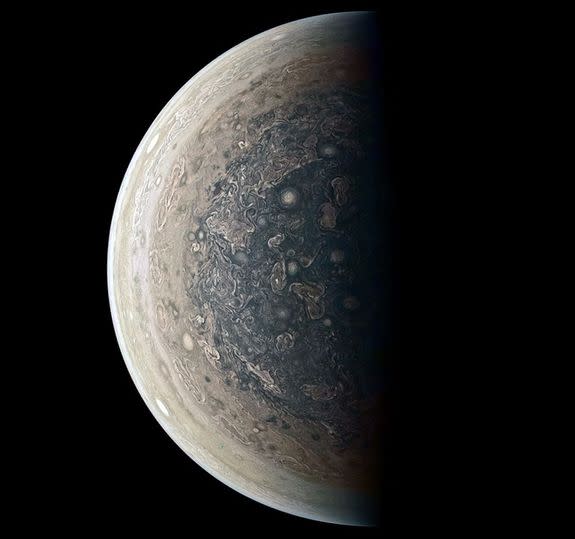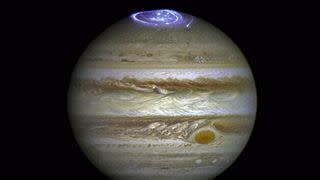The largest planet in the solar system could also be the oldest

Jupiter is the largest planet in our solar system, and it might also be the oldest.
According to a new study published in Proceedings of the National Academy of Sciences this week, researchers have found evidence that Jupiter is the oldest of the planets thanks to an analysis of 19 meteorite samples on Earth.
The new analysis suggests that Jupiter formed only about 1 million years after the dawn of the solar system 4.5 billion years ago.
SEE ALSO: Jupiter is the gigantic, stormy hellscape we always feared
Researchers examining the meteorites found that they appear to be formed from two different reserves of material in the early solar system.
"The most plausible mechanism for this efficient separation is the formation of Jupiter, opening a gap in the disc (a plane of gas and dust from stars) and preventing the exchange of material between the two reservoirs," Thomas Kruijer, lead author of the study, said in a statement.

Image: NASA/JPL-Caltech/SwRI/MSSS/Roman Tkachenko
Long story short: Jupiter formed so quickly and was so giant that it kept two different reserves of early planetary material from intermingling in the early days of the solar system.
Kruijer and the team of researchers were able to differentiate between the two reservoirs of material by measuring isotopes in the meteorite samples.
They found that each set of material did exist within the same period of time in the early solar system, but they didn't intermix, meaning that something — in this case, Jupiter — must have been keeping them separated.
Scientists aren't able to directly measure meteorites from Jupiter because we don't have any.
"We do not have any samples from Jupiter, in contrast to other bodies like the Earth, Mars, the moon and asteroids," Kruijer said. "In our study, we use isotope signatures of meteorites (which are derived from asteroids) to infer Jupiter's age."

Image: NASA/JPL-Caltech/SwRI/MSSS/Gabriel Fiset
These results are far from a sure thing, and it'll still take more research to figure out exactly when and how Jupiter formed in the early days of the solar system.
“We need more evidence that says this is where those two meteorite classes form – one inward and one outward,” Cornell University's Jonathan Lunine told New Scientist of the finding. “But it’s a very nice measurement.”
By learning more about Jupiter, we can also learn more about the evolution of every other planet in the solar system.
Jupiter has more mass than all of the other planets combined, and its immense gravity helped shape the orbits of the other objects in the solar system as they move around the sun.
WATCH:

